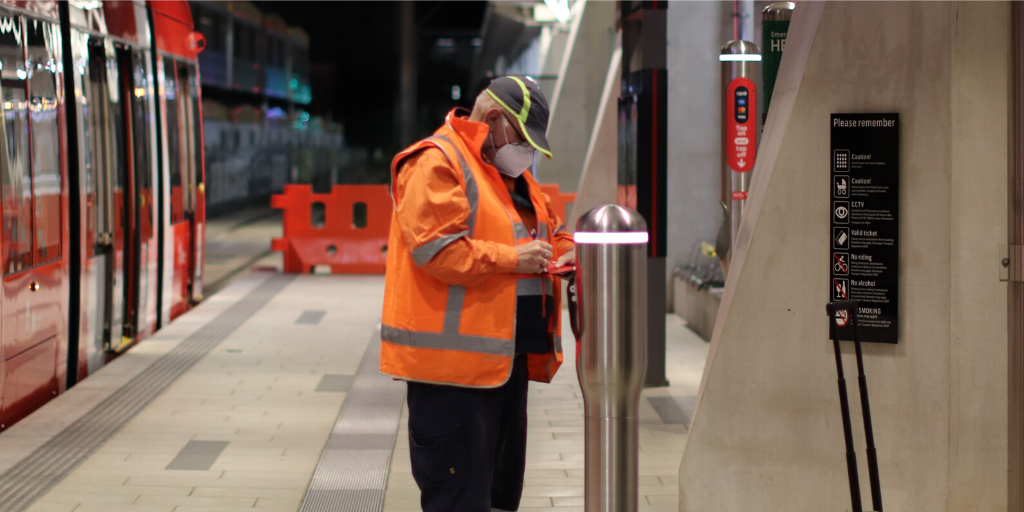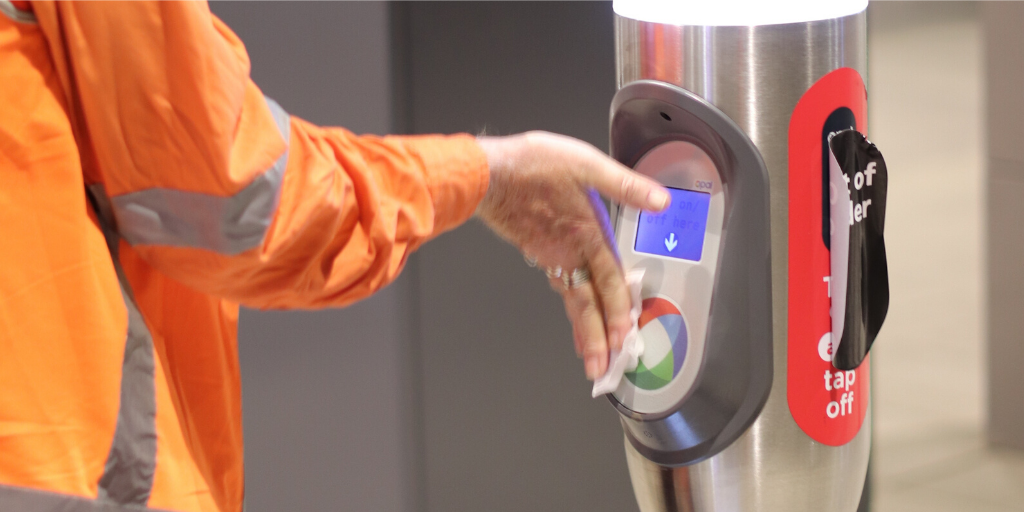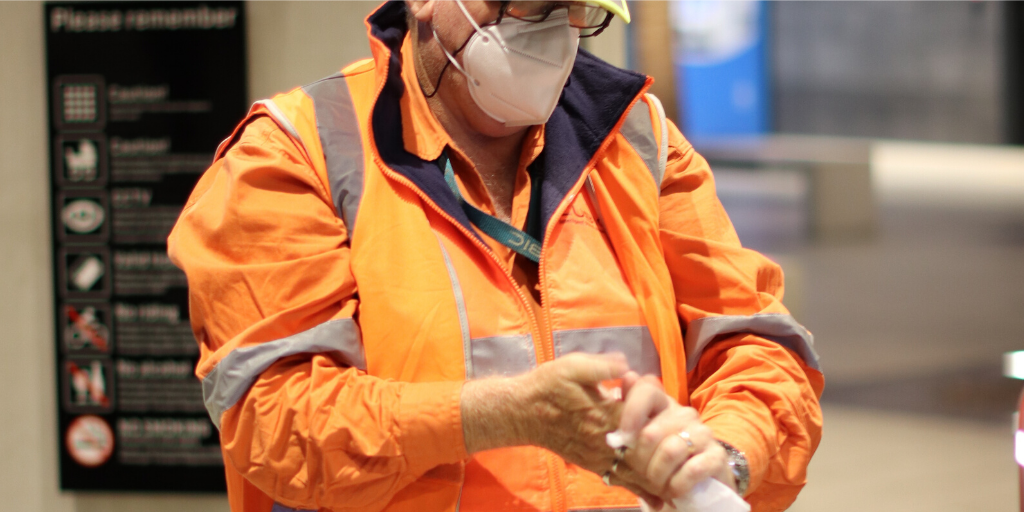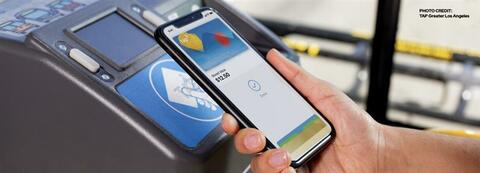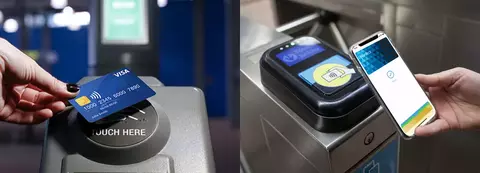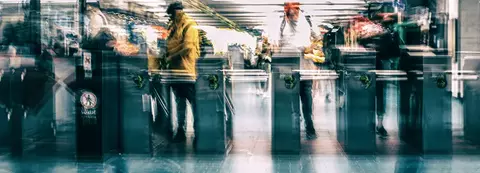The coronavirus may be the catalyst to faster adoption of contactless payment technology for public transport, with potential safety benefits including fewer physical touchpoints when making payments, and less exposure to contaminated surfaces.
Overseas commentators and transport experts believe that allowing commuters to use their bank cards, mobile phones, and other electronic devices to pay for travel reduces the risk to commuters from their interactions with other people and contaminated surfaces.
The benefits of contactless payments in helping to reduce the spread of the virus on public transport is welcome news for cities like Sydney, where Cubic, a global leader in contactless has already installed the technology, and others like Brisbane and New York, where installations are now underway.
While it is not possible to wrap every commuter in their own private protective bubble, it is possible to reduce the amount of personal contact involved in travel through a simpler, cleaner, and quicker payments system.
This includes eliminating cash, tickets, and queues, speeding up boarding and departing from transport modes and reducing the need for personal contact with ticket sellers, transport staff and drivers.
New York, which is now rolling out the new OMNY contactless payments system, has been hard hit by the virus with over 20 thousand deaths so far, including more than 100 transport workers.
The Metropolitan Transportation Authority (MTA) Program Executive in charge of the program, Al Putre said that “Transitioning the transit system to contactless payment couldn’t have come at a better time for the MTA amid the coronavirus pandemic. The touchless element does give people comfort knowing they can pay their fare without touching anything.” - ABC 7 New York.
In Sydney, New South Wales Premier Gladys Berejiklian warns that public transport is one of the major avenues for spreading the virus and has advised people to avoid using it wherever possible.
As virus lockdown restrictions are eased in many major cities, economies restart and people return to work, the big question is – how to protect the lives of commuters getting back onto public transport, while we wait for a cure which may never come?
Transport experts believe contactless payments can assist.
Professor John Nelson, Chair in Public Transport at the University of Sydney’s Institute of Transport and Logistic Studies believes – “A strong public transport system is essential to meet the economic, environmental and social needs of our cities, so any initiative to improve the attraction of public transport, so that people return to it, is to be commended.”
Online news portal Gizmodo speculated that “Should another wave of coronavirus spread around then, too, commuters may be looking to use everything at their disposal to keep themselves safe – and a contactless fare system would be an important tool in that arsenal.” - Gizmodo Australia, 04/06/20
Luckily, Sydney is well ahead of the pack in this region when it comes to contactless, thanks to the foresight of NSW Transport Minister Andrew Constance and Transport for New South Wales. The rollout of the new technology, the first in Australia, began with a small trial on a Manly ferry in 2017.
Sydney now has the region’s most advanced electronic payments system, following the completion of the contactless rollout late last year, a mere five months before the virus struck Australia.
This was extremely fortuitous.
As the virus continues to spread globally, with more than 7 million cases of infection and 400 thousand deaths, Cubic has been working on new control measures to protect commuters and restore confidence in transport.
Scientists studying the virus are gaining a better understanding of what it is, how it spreads and what its vulnerabilities are. This may lead to the development of clever ways to kill it and the installation of new defence mechanisms in ticketing and payment platforms. For example, the MTA says using UV (ultraviolet) light to kill the bug shows promise.
At Cubic, the safety of the traveling public and our own staff is our primary concern. Early on in the pandemic, when New York was recording 1,000 deaths a day and hospitals there and in other places like Australia were running out of personal protective equipment, Cubic made the decision to modify our manufacturing capabilities to produce face coverings to protect our global workforce and take the pressure off supplies urgently needed in the hospital system.
The masks were delivered to front line staff including Cubic technicians servicing and maintaining ticketing equipment in NSW and Queensland. Additionally, we also supplied face coverings to our customers including the MTA in New York to be distributed to their employees for social distancing purposes.
I am humbled to see the dedication of all the front-line transport workers who go out every day to keep the transport system running. They are all heroes and deserve our respect and thanks.
One thing is for sure – the world is changing day-to-day and will never be the same after this pandemic runs its course. It also turns out that tapping on with your credit card, smartwatch or mobile phone could just save you more than time.
“What’s remarkable about contactless payment is that it’s a ready-made solution to a problem arising years after the debut of the technology.” - ADWEEK, New York


